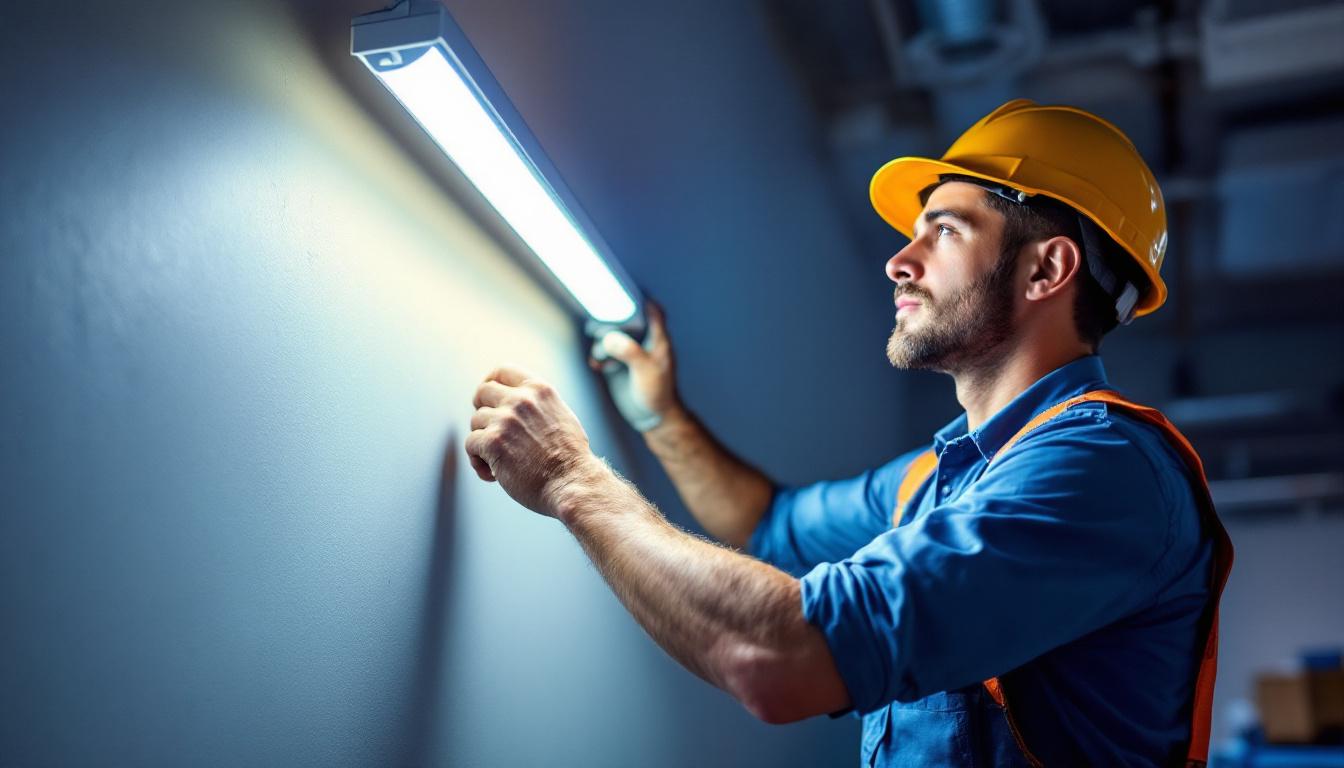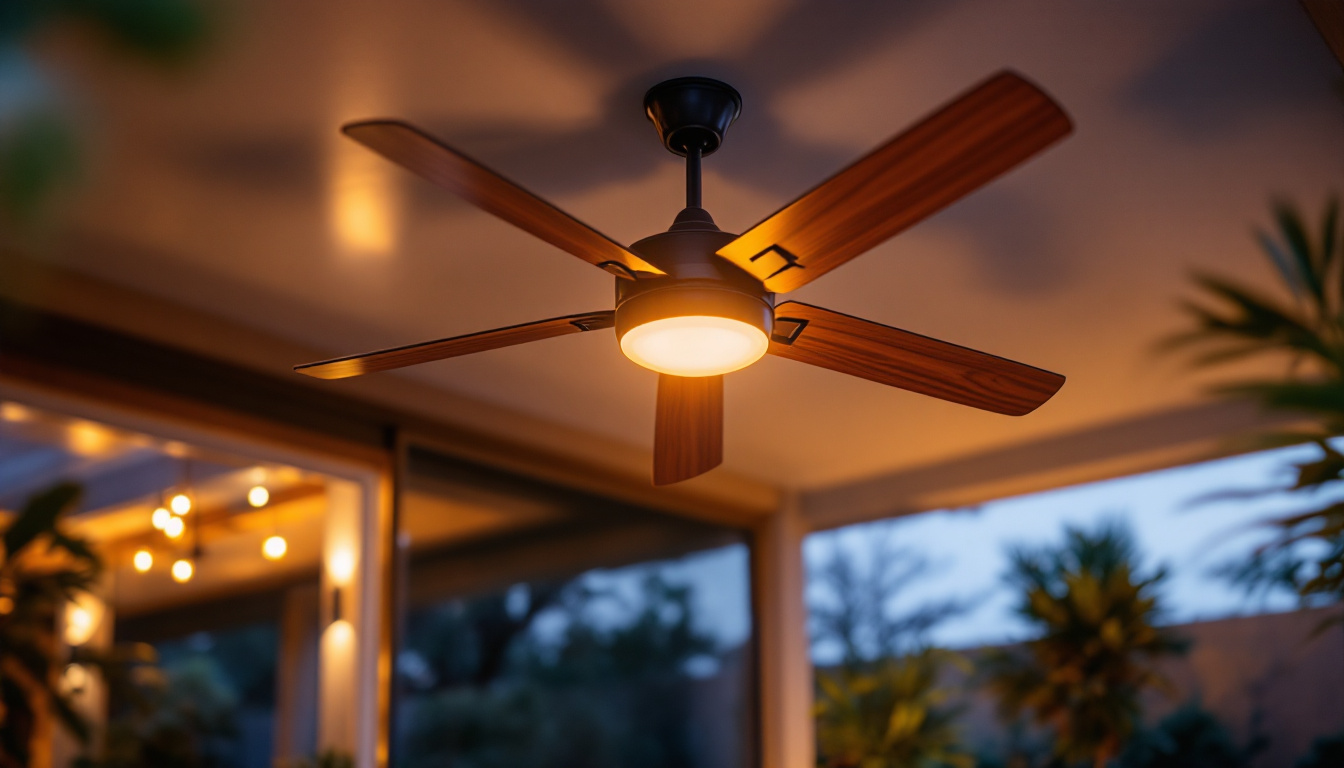
One of the most frequent errors lighting contractors make when working with single tube fluorescent light fixtures is selecting the wrong fixture size for the space. It might seem straightforward—choose a fixture that fits the area—but this decision has far-reaching consequences. A fixture that’s too small won’t provide adequate illumination, leading to dark spots and uneven lighting. Conversely, an oversized fixture can cause glare and waste energy.
Lighting contractors must carefully assess the room’s dimensions, ceiling height, and the intended use of the space before choosing a fixture. For example, a narrow hallway requires a different approach than a large open office. Using lighting design tools or photometric data can help ensure the fixture’s lumen output matches the space’s needs. Skipping this step often results in costly rework and dissatisfied clients.
Moreover, the choice of fixture size is not solely about aesthetics; it also plays a crucial role in energy efficiency and sustainability. Selecting the right size can optimize energy consumption, which is increasingly important in today’s environmentally conscious market. By ensuring that the fixture provides adequate light without excess wattage, contractors can help clients save on energy bills while also contributing to a reduced carbon footprint. This is particularly significant in commercial settings where lighting can account for a substantial portion of energy use.
Additionally, the impact of proper fixture sizing extends beyond functionality and energy savings; it also influences the overall ambiance and mood of a space. In environments such as restaurants or retail stores, the right lighting can enhance customer experience, drawing attention to products or creating a welcoming atmosphere. In contrast, poor lighting choices can lead to a negative perception of the space, affecting customer satisfaction and retention. Therefore, lighting contractors must not only focus on technical specifications but also consider the psychological effects of light on occupants, making informed decisions that elevate the overall design and experience of the environment.
Ballasts are the heart of fluorescent fixtures, controlling the current to the lamp and ensuring stable operation. Yet, many contractors overlook ballast compatibility or opt for low-quality ballasts to save money. This mistake can cause flickering, premature lamp failure, and increased energy consumption.
It’s crucial to match the ballast type with the fluorescent tube—whether it’s instant start, rapid start, or programmed start. Each ballast type affects lamp life and performance differently. For single tube fluorescent fixtures, programmed start ballasts often provide the best balance of energy efficiency and lamp longevity, especially in environments with frequent switching.
Investing in high-quality, compatible ballasts reduces maintenance calls and enhances client satisfaction. It also ensures compliance with energy codes and standards, which increasingly demand efficient lighting solutions.
Moreover, the choice of ballast can significantly impact the overall lighting quality in a space. High-quality ballasts not only prolong the life of fluorescent tubes but also contribute to a more stable light output, reducing the risk of flickering that can be distracting in workplaces. In settings such as offices or retail environments, where consistent lighting is essential for productivity and customer experience, the right ballast can make a noticeable difference. Additionally, many modern ballasts are designed to be more energy-efficient, which can lead to significant cost savings over time, especially in large installations where multiple fixtures are in use.
Furthermore, the integration of smart technology with ballasts is becoming increasingly popular. Some advanced ballasts now come equipped with features that allow for dimming capabilities and integration with building management systems. This not only enhances energy savings but also allows for greater control over the lighting environment, adapting to the needs of the space throughout the day. As the industry moves towards more sustainable practices, understanding and prioritizing ballast quality and compatibility will be essential for contractors looking to stay ahead in the competitive lighting market.
Electrical connections in single tube fluorescent fixtures require precision and attention to detail. A common mistake is rushing the wiring process or neglecting manufacturer instructions. Improper wiring can lead to fixture malfunction, safety hazards, or even electrical fires. The consequences of such oversights can be severe, not only resulting in potential damage to the fixture but also posing significant risks to the safety of individuals in the vicinity. Ensuring that all components are compatible and correctly installed is paramount to achieving optimal performance and longevity of the lighting system.
Contractors should always verify the wiring configuration, ensuring correct polarity and secure connections. Using the right wire gauge and connectors is essential for safety and fixture performance. Additionally, grounding the fixture properly cannot be overstated—it protects both the fixture and occupants from electrical faults. It is also advisable to use high-quality materials that meet or exceed industry standards, as these can greatly enhance the reliability and efficiency of the installation. Regular training and updates on best practices for electrical installations can further equip contractors with the knowledge they need to avoid common pitfalls.
Another frequent oversight is failing to test the fixture after installation. A simple power-on test can reveal wiring errors or ballast issues before the project is complete, saving time and reducing callbacks. Beyond just the initial testing, implementing a comprehensive inspection checklist can help ensure that all aspects of the installation have been thoroughly reviewed. This checklist should include verifying the integrity of the fixture, checking for any signs of overheating, and ensuring that all safety features are functioning correctly. Additionally, documenting the installation process can provide valuable insights for future projects and help maintain high standards across all installations.
Single tube fluorescent fixtures don’t operate in a vacuum. Ambient temperature, humidity, and airflow significantly influence their performance and lifespan. Contractors sometimes install fixtures in environments without considering these factors, leading to suboptimal results.
For instance, fluorescent lamps and ballasts have optimal operating temperature ranges. Installing fixtures in unheated warehouses or outdoor covered areas without accounting for temperature extremes can cause flickering or early failure. Similarly, high humidity can corrode components if fixtures lack proper sealing.
Understanding the installation environment allows contractors to select fixtures rated for specific conditions or to recommend additional protective measures. This foresight prevents premature failures and enhances the reliability of the lighting system.
Moreover, the impact of ambient conditions extends beyond just temperature and humidity. Airflow, or the lack thereof, can also play a crucial role in the performance of fluorescent fixtures. In poorly ventilated spaces, heat can accumulate, leading to overheating of the fixtures, which may further exacerbate flickering and reduce the lifespan of the lamps. In contrast, well-ventilated areas can help dissipate heat, promoting optimal functioning and efficiency. Contractors should assess the airflow dynamics of the installation site to ensure that fixtures are not only placed strategically but also that they are compatible with the environmental conditions.
Additionally, the choice of fixture materials can significantly influence durability in varying ambient conditions. For example, fixtures made from corrosion-resistant materials are ideal for environments with high humidity or exposure to chemicals, such as in laboratories or industrial settings. On the other hand, fixtures designed for dry, temperature-controlled environments may not withstand the rigors of harsher conditions. By carefully evaluating the specific needs of the installation site, contractors can make informed decisions that enhance both the performance and longevity of the lighting systems they install.
Lighting contractors sometimes overlook how easy it will be to maintain single tube fluorescent fixtures after installation. Poor access to lamps and ballasts complicates routine maintenance, increasing labor costs and downtime for clients.
Fixtures installed in tight or awkward spaces can be difficult to service. This is especially true in commercial or industrial settings where lighting is critical to operations. Selecting fixtures with accessible lamp holders and ballasts simplifies replacement and troubleshooting.
Additionally, contractors should advise clients on maintenance schedules and provide guidance on lamp replacement intervals. Proper planning at the installation stage reduces long-term headaches and fosters positive client relationships.
Fluorescent lighting is often chosen for its energy efficiency compared to incandescent options. However, contractors sometimes miss opportunities to maximize savings with single tube fluorescent fixtures. For example, failing to install electronic ballasts or ignoring dimming controls can limit efficiency gains.
Electronic ballasts reduce energy consumption and eliminate flicker, improving occupant comfort. Incorporating occupancy sensors or daylight harvesting controls further enhances efficiency by ensuring lights operate only when needed. These features are increasingly expected in commercial projects and can differentiate a contractor’s offering.
Advising clients on these technologies demonstrates expertise and commitment to sustainable solutions. It also aligns with evolving building codes that emphasize energy conservation.
Lighting is not just about illumination; it contributes to the overall design and functionality of a space. Contractors sometimes focus solely on technical specifications, neglecting how single tube fluorescent fixtures fit into the aesthetic and practical needs of the environment.
Choosing fixtures with appropriate color temperature and color rendering index (CRI) affects how colors appear and how comfortable occupants feel. For retail or hospitality spaces, warm or neutral color temperatures may be preferable, while cooler temperatures suit task-oriented areas like offices or workshops.
Additionally, the fixture’s physical design should complement the interior style. Sleek, low-profile fixtures might be ideal for modern spaces, whereas industrial designs suit warehouses. Discussing these considerations with clients ensures the lighting solution supports both function and form.
Single tube fluorescent light fixtures remain a reliable choice for many lighting applications. However, common mistakes-from improper sizing and ballast selection to neglecting environmental factors and maintenance planning-can undermine their effectiveness. Lighting contractors who pay close attention to these details deliver superior results, reduce callbacks, and build stronger client trust.
By combining technical knowledge with practical installation strategies, contractors can optimize performance, enhance energy efficiency, and ensure long-lasting, attractive lighting solutions. Careful planning and execution make all the difference when working with single tube fluorescent fixtures.
Don’t let common lighting mistakes compromise your projects. At LumenWholesale, we provide lighting contractors with the high-quality, spec-grade lighting products you need to avoid these pitfalls. With our competitive wholesale prices and commitment to top-tier products, you can trust that you’re getting the best value for your investment. Say goodbye to inflated markups and hello to a vast selection of reliable lighting solutions that meet the highest industry standards. Plus, with free shipping on bulk orders, you can stock up on essential lighting without any hidden fees. Elevate your lighting game and ensure your installations shine with LumenWholesale. Wholesale Lighting at the Best Value.

Discover essential information about LED street lights tailored for lighting contractors.

Discover how “Buy Lights” streamlines the purchasing process for lighting contractors, offering efficient solutions and expert insights to illuminate your projects with ease..

Discover essential techniques and strategies for lighting contractors to optimize circuitry in various projects.

Discover essential tips and common pitfalls for lighting contractors when installing large outdoor ceiling fans.